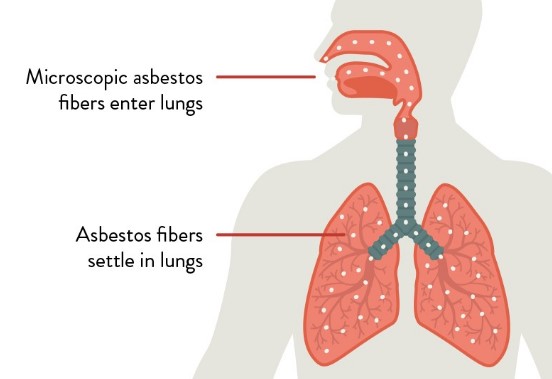Asbestos and radon are both hazardous substances that can cause serious health problems if exposed to them. However, it is important to understand the differences between these two substances and how to best protect yourself from them.
In this blog, we will discuss what makes asbestos and radon different, the health risks associated with each, and the best ways to protect yourself from them.
Health hazards of asbestos and radon

Asbestos and radon are both dangerous substances that can have serious health consequences if exposed to for a long period of time. However, there are some key differences between them.
Radon, on the other hand, is a colorless, odorless, and tasteless gas that is a byproduct of decaying uranium and is the second leading cause of lung cancer. Asbestos exposure can cause mesothelioma, a rare form of cancer, while extended exposure to radon can cause lung cancer.
Both substances can be found in the air and should be monitored to ensure safety.
How asbestos and radon differ
Asbestos and radon are both hazardous materials, however, the two differ in several key ways. Asbestos is a naturally occurring mineral composed of microscopic fibers that can be dangerous when inhaled. Radon, on the other hand, is a colorless, odorless, radioactive gas that can lead to lung cancer when inhaled.
Asbestos is a solid material that does not move through the air, while radon is a gas that can be released from the ground and can travel through the air. Additionally, asbestos is a naturally occurring material, while radon is formed through the decay of naturally occurring uranium in the soil and rocks.
Asbestos fibers are resistant to heat, fire, and chemicals, while radon gas dissipates quickly when exposed to the atmosphere. Understanding the differences between asbestos and radon can help you make informed decisions if you come into contact with either substance.
Sources of exposure to asbestos and radon
Asbestos and radon are both sources of exposure to dangerous elements, but they differ in several ways. Asbestos is a naturally occurring mineral composed of tiny fibers that can be found in rocks, soil, and debris.
Radon, on the other hand, is an invisible, odorless gas that is naturally present in the environment. Exposure to radon gas can cause lung cancer and other respiratory illnesses.
The key difference between asbestos and radon is that asbestos is a mineral, while radon is a gas. Asbestos can be found in many places and can be inhaled, while radon is a gas and can be inhaled as well.
Testing for asbestos and radon
Testing for asbestos and radon is an important part of ensuring a safe home environment. But what is the difference between these two potential hazards?
These fibers can become airborne and are considered a carcinogen. Radon is an odorless, colorless, radioactive gas that can seep into homes from the ground and is also a carcinogen.
Both of these materials can be tested for to ensure the safety of your family, but they differ in their origin and the kind of testing that is needed. Asbestos testing requires a specialized laboratory to analyze the materials, while radon testing can be done in the home with a simple kit.
It is important to take the necessary steps to test for both asbestos and radon to ensure a safe and healthy home environment.
Prevention and mitigation strategies for asbestos and radon
When it comes to hazardous materials, asbestos and radon are two of the most common and potentially dangerous. It is important to understand the differences between the two in order to create effective prevention and mitigation strategies. Asbestos is a group of naturally occurring minerals that can be found in soil, rock and construction materials.
Asbestos is a group of naturally occurring minerals that can be found in soil, rock and construction materials. It is known to cause lung cancer, mesothelioma, and other serious health conditions. Radon is an invisible, odorless, and tasteless gas that can seep into homes and buildings from the soil and rock beneath them.
It is the leading cause of lung cancer in non-smokers and can have serious health implications if not properly addressed. While both materials can be dangerous, the prevention and mitigation strategies for asbestos and radon vary due to their unique properties. Asbestos prevention strategies include using respirators and protective clothing when working around it, using wet methods to reduce dust, and sealing off contaminated areas.
Radon mitigation strategies include sealing foundations, installing ventilation systems, and installing radon sump systems. It is important to understand the differences between asbestos and radon in order to protect yourself and your family from potential harm.
Final Touch
The main difference between asbestos and radon is that asbestos is a naturally-occurring mineral fiber that is often used in building materials, while radon is an invisible, odorless, radioactive gas that can seep into a home from the soil. Asbestos can cause health problems, such as lung cancer, when inhaled, while long-term exposure to radon can also cause lung cancer. Both should be identified and removed, if possible, to reduce the risk of health problems.

